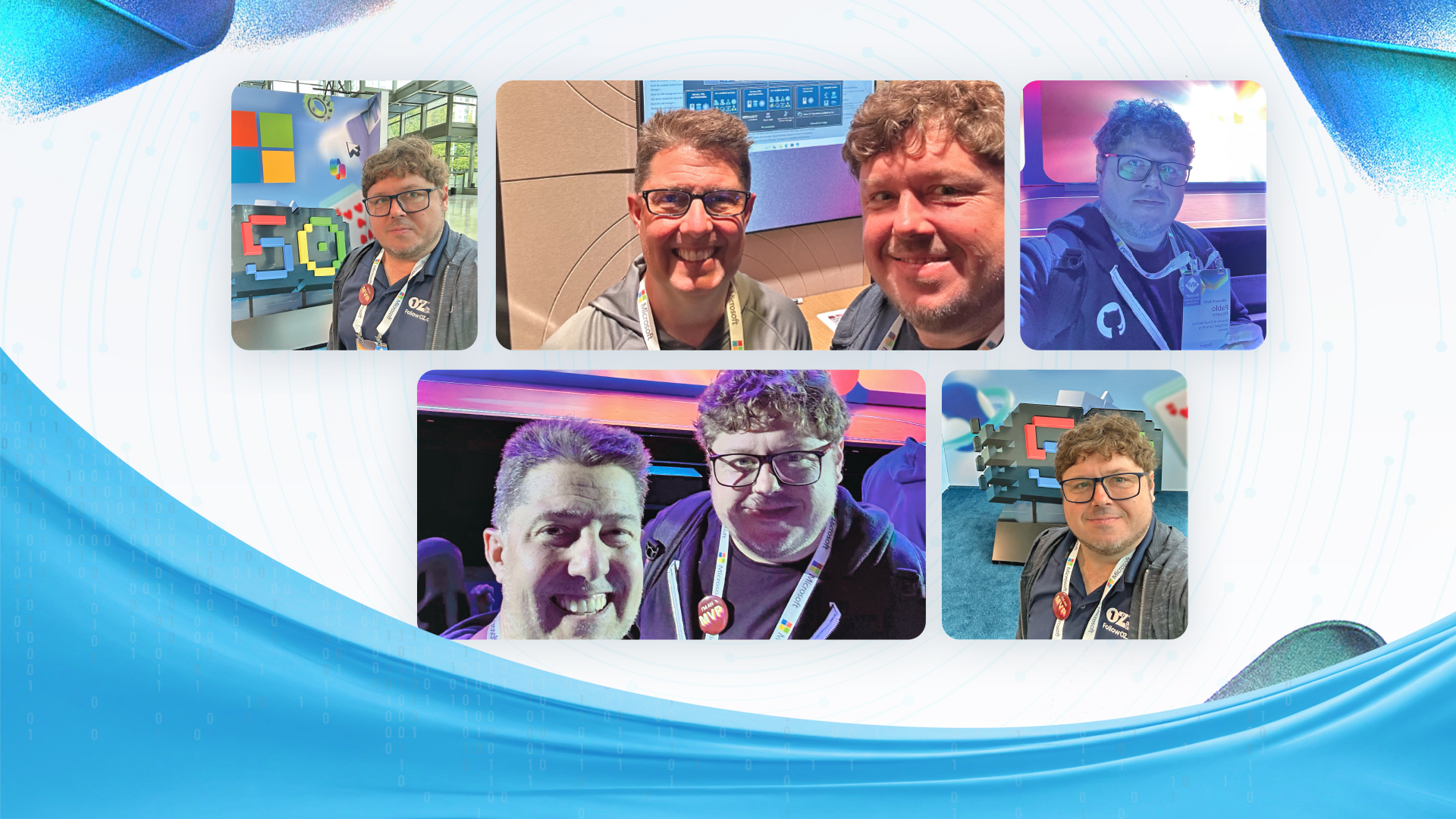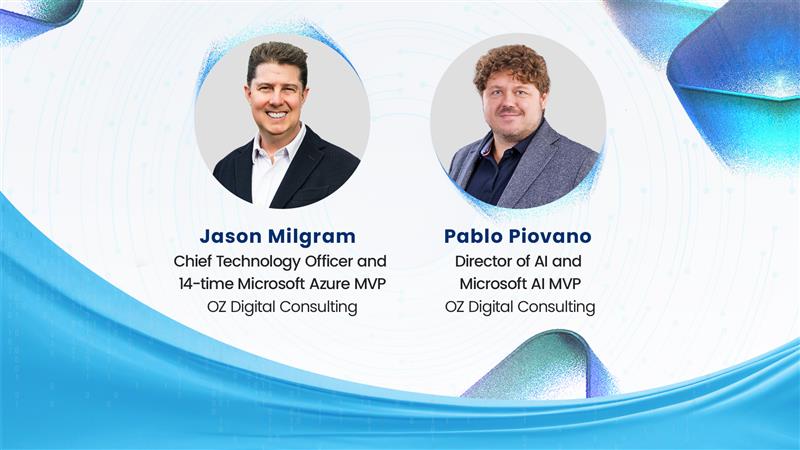In the three previous articles comprising the Powerful Strategic Frameworks series, I wrote about the importance of having a clear vision and mission, as well as identifying strategic drivers, organizational goals, and KPIs when creating a Strategic Decision Making Framework. These building blocks provide the necessary direction and focus needed to turn a company’s aspirations into a roadmap for success, and they ensure that the framework drives initiatives that fully support the overall core of the organization, as well as the current strategic direction. Without these, we can’t always be sure that what we are doing is driving the organization forward. However, before we can start evaluating strategic initiatives and options against the criteria defined in the framework, we need to identify gaps and opportunities, in relation to these.
Identifying gaps and opportunities is a crucial step in creating a comprehensive Strategic Decision Making Framework. It helps to ensure that the framework is robust and that it addresses critical areas that either need remediation or opportunities that the organization is not taking advantage of.
There is no magic to identifying gaps and opportunities. We use a variety of very traditional research methods, including interviewing key stakeholders, conducting market and competitive research, creating a current state analysis, and customer research. While these are time-tested and conventional approaches, they yield the results that we are looking for.
Just so we are all on the same page, some definitions:
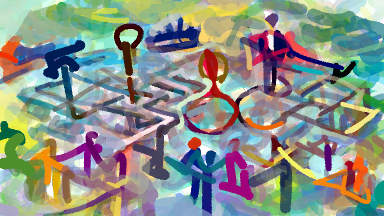
A gap can be a disparity or difference between an organization’s current state and its desired state. In the context of strategic planning and creating a framework, we want to identify areas where the organization is falling short in meeting its goals, in the way it goes about its daily business, or where there is a disconnect between different levels or groups of the organization. Gaps are mostly internally focused and can be caused by a variety of factors such as changes in market conditions, technological advancements, legacy systems, and processes, a mindset of “that’s the way it’s always been done,” shifts in consumer behavior, internal organizational issues, just to name a few.
An opportunity, on the other hand, is a favorable circumstance that presents itself and can be exploited to achieve a strategic goal. Opportunities come from changes in the external environment that competitors have not yet capitalized upon, including technological advancements, shifts in consumer behavior, or changes in regulations, among many other factors. In the context of a strategic framework, opportunities are identified through an analysis of the industry and market landscape. They are mostly outward facing. The identification of opportunities is critical for organizations to stay ahead of the competition, capitalize on trends, and achieve strategic goals.
There is a tendency to rewrite Gaps as Opportunities, depending on the organization and the management team – sometimes they just do not want to hear about their deficiencies. I once (literally) had the CEO of a large retailer tell me that he didn’t want us to do the research because then he would know what the issues actually were, and then he would have to do something about it. Which is sheer craziness. So don’t rewrite them – Gaps are gaps, and Opportunities are opportunities and each should be viewed that way. And once we have identified the gaps and opportunities we add the relevant ones as criteria to our model.
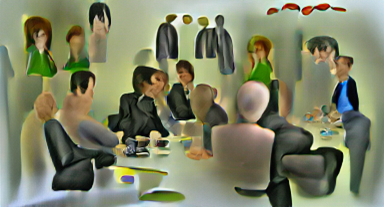 Interviewing key stakeholders, both inside and outside the organization, is essential to gain a thorough understanding of the organization’s strengths, weaknesses, opportunities, and threats. Key stakeholders can provide valuable insights into the company’s current performance, as well as the potential for growth and expansion and their vision(s) for where they see the organization going over various timeframes. It’s important when speaking with stakeholders to speak both across and up and down the organization, and with as many departments as you can speak to. My experience has been that the views of the executive and leadership team are different than the views of middle management and likewise different for those in the field or with direct client and customer contact. In fact, this is something that I have found in every case. You are looking for two things when speaking with the various teams and individuals within the company: consistency, and differences. Very often, simply identifying consistencies and differences, and bringing them to light a secondary goal of “understanding” between various departments and groups can be achieved.
Interviewing key stakeholders, both inside and outside the organization, is essential to gain a thorough understanding of the organization’s strengths, weaknesses, opportunities, and threats. Key stakeholders can provide valuable insights into the company’s current performance, as well as the potential for growth and expansion and their vision(s) for where they see the organization going over various timeframes. It’s important when speaking with stakeholders to speak both across and up and down the organization, and with as many departments as you can speak to. My experience has been that the views of the executive and leadership team are different than the views of middle management and likewise different for those in the field or with direct client and customer contact. In fact, this is something that I have found in every case. You are looking for two things when speaking with the various teams and individuals within the company: consistency, and differences. Very often, simply identifying consistencies and differences, and bringing them to light a secondary goal of “understanding” between various departments and groups can be achieved.
“I understand now.” – My clients
For one client that I worked with (a major book publisher) the production, marketing, and sales teams were always at odds fighting each other. Leadership just wanted everyone to work together to achieve common goals. After the interviews were completed, we identified these differences, and during a workshop displayed them in a grid as part of the discussion. As each team talked about what we had captured, the other teams were literally saying “I never knew that’s what you meant. I understand now.” And while we didn’t solve all of the issues between the teams, that understanding allowed us to create a common framework across the organization, and the teams started to work closer to the vision the executives had in mind.
As an aside, SWOT analyses are also time-tested methods that organizations use to look at their gaps and opportunities. As long as the SWOT analysis isn’t the end-deliverable (and very often it is) and is used as an input to identify model criteria it’s a valid exercise.
Market and competitive research are crucial tools for identifying gaps and opportunities. By researching the market and analyzing the competition, we can gain a better understanding of the industry landscape and identify any gaps (opportunities?) in the market that the organization can fill. We can also identify potential threats that may impact the organization’s performance, which can then be used to create more criteria for the strategic decision-making framework. When looking outside the organization, especially in today’s always-connected and digital world, it’s important to also look within adjacent industries, and even to see what is happening in non-related industries. Your key stakeholders, whether they are customers, employees, vendors, or partners are by and large actually people – and these people are using tools and apps across a variety of aspects of their lives, and their expectations are getting set by not only what is going on in your industry, but across their day to day interactions with everything they interact with.
“Your best competitors don’t set the bar. They set the floor. And if you want to dance, you need to, at a minimum be on that dance floor” – Me
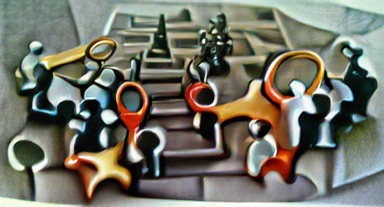 Everyone says that your competitors set the bar. I disagree with that statement. At a minimum, your best competitors (and others that your stakeholders interact with) don’t set the bar that your strategy needs to attain. They set the floor. And if you want to dance, that’s the level you need to be at, at a minimum. And your framework needs to encompass that ‘floor’ as criteria. It’s a subtle shift in thinking, but I believe that it helps to drive better initiatives across the organization. This was part of Jack Welch’s mandate that any business that GE was in needed to be either number 1 or 2 in that industry (I’m totally guessing, but it seems he wanted GE to be—at a minimum—dancing with the competition).
Everyone says that your competitors set the bar. I disagree with that statement. At a minimum, your best competitors (and others that your stakeholders interact with) don’t set the bar that your strategy needs to attain. They set the floor. And if you want to dance, that’s the level you need to be at, at a minimum. And your framework needs to encompass that ‘floor’ as criteria. It’s a subtle shift in thinking, but I believe that it helps to drive better initiatives across the organization. This was part of Jack Welch’s mandate that any business that GE was in needed to be either number 1 or 2 in that industry (I’m totally guessing, but it seems he wanted GE to be—at a minimum—dancing with the competition).
Customer research is also essential in identifying gaps and opportunities. By understanding the needs and wants of customers, we can identify gaps and opportunities. Customer research can also provide valuable insights into the customer experience, which can be used to create more criteria for the strategic decision-making framework. But more about this in a future article.
Creating a current state analysis is also crucial in identifying any gaps and opportunities that may exist and will provide a clear understanding of where the organization stands today. A current state analysis looks at the people, processes, platforms, data, existing technologies and architectures, and applications currently supporting the business:
People: This involves assessing the skills, knowledge, and experience of the organization’s employees, including leadership and key personnel. This will help identify any gaps or weaknesses in the organization’s talent pool that need to be addressed.
Processes: A review of the organization’s current processes and workflows can help identify areas for improvement and potential bottlenecks in the organization’s operations. This can include processes related to product development, customer service, supply chain management, and more.
Platforms: The analysis should also look at the platforms and systems that the organization is currently using to support its operations, including hardware, software, and other technologies. This can help identify areas where the organization may need to invest in new technologies to stay competitive.
Data: Analyzing the data that the organization is currently collecting and using can help identify areas where data is being underutilized or needs cleaning, for instance. This can include customer data, financial data, and other types of data that are critical to the organization’s success.
Existing technologies and architectures: Reviewing the organization’s existing technologies and architectures can help identify areas where they are outdated or no longer meeting the needs of the business. This can include legacy systems, databases, and other technologies that may need to be replaced or upgraded.
Applications currently supporting the business: Finally, a review of the applications and tools currently used by the organization can help identify areas where new or more effective solutions are needed. This can include customer relationship management (CRM) tools, marketing automation platforms, line of business applications, project management software, and more.
By analyzing the current state of the organization, we can identify any gaps and opportunities that exist, which can then be used to create more criteria for the strategic decision-making framework.
“Clients do not come first. Employees come first. If you take care of your employees, they will take care of the clients.” – Richard Branson.
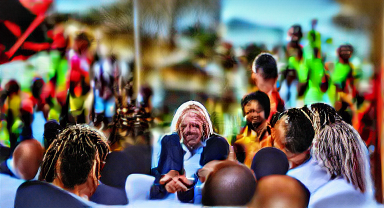 One of the opportunities (no pun intended) when doing the current state is to do a full employee experience assessment which gives you a qualitative view of how your employees, at all levels and across departments, feel about what is actually happening, both inside the organization and outside with other stakeholders. Many organizations talk about the importance of keeping employees happy and with a focus on employee experience, but few actually take the pulse of what they actually think. As Richard Branson is quoted as saying that taking care of your employees is first, and the first step to that is to understand their experience. (OZ has an Employee Experience Model that helps our clients look at 7 different categories across 5 employee experience pillars that gives a great view into your employees’ experience across the organization that we include when doing this kind of research.)
One of the opportunities (no pun intended) when doing the current state is to do a full employee experience assessment which gives you a qualitative view of how your employees, at all levels and across departments, feel about what is actually happening, both inside the organization and outside with other stakeholders. Many organizations talk about the importance of keeping employees happy and with a focus on employee experience, but few actually take the pulse of what they actually think. As Richard Branson is quoted as saying that taking care of your employees is first, and the first step to that is to understand their experience. (OZ has an Employee Experience Model that helps our clients look at 7 different categories across 5 employee experience pillars that gives a great view into your employees’ experience across the organization that we include when doing this kind of research.)
Keep in mind that when we are identifying the gaps and opportunities we are not trying to solve them, we are trying to catalog them and understand if there are main themes that need to be addressed in the organization. This process is definitely more art than science.
Some examples for three industries (Insurance, Travel & Hospitality, and Healthcare) could be [NOTE: these are probably a little more generic than the gaps we would normally create during an engagement, but then again, possibly not]:
Insurance
Gaps
- Limited adoption of digital and automation technologies in the underwriting and claims process
- Limited focus on environmental, social, and governance (ESG) factors in investment and underwriting decisions
- Insufficient transparency and communication with policyholders, resulting in low trust and poor customer experience
- Inadequate risk management practices, resulting in unexpected losses and claims payouts
Opportunities
- Increased demand for cybersecurity insurance due to rising cyber threats and attacks
- Adoption of artificial intelligence (AI) and machine learning (ML) technologies for predictive underwriting and claims handling
- Offering personalized and tailored policies through the use of big data and analytics
- Incorporating ESG factors into investment and underwriting decisions to align with growing societal and regulatory expectations
- Leveraging emerging technologies such as blockchain and distributed ledger to enhance transparency and security in insurance processes
- Partnering with insurtech startups and other innovative companies to drive digital transformation and innovation within the industry.
Travel & Hospitality
Gaps
- Limited personalization and customization in customer experiences, resulting in lower customer loyalty and retention
- Limited use of advanced technologies such as AI, VR, and AR in enhancing customer experiences
- Limited innovation and differentiation in travel products and services, resulting in a crowded and highly competitive market
- Inadequate attention to health and safety standards, particularly in the wake of the COVID-19 pandemic
- Insufficient use of customer data and feedback to improve service quality and optimize pricing strategies
- Limited adoption of emerging technologies such as blockchain and the Internet of Things (IoT) to improve operational efficiency and enhance customer experiences
Opportunities
- Developing new and innovative travel products and services, such as sustainable travel options and experiential travel packages
- Emphasizing health and safety standards in marketing and customer communications to build consumer confidence and trust
- Integrating IoT technologies such as smart room controls and wearables to enhance the customer experience and improve operational efficiency
- Developing more personalized and customized travel experiences through the use of data analytics and AI
- Increasing focus on sustainability and responsible tourism practices to meet growing consumer demand for eco-friendly travel options
- Expanding into new markets and customer segments, particularly in emerging economies with growing middle classes and increasing disposable incomes
- Partnering with other travel and hospitality providers, as well as technology companies, to create seamless and integrated travel experiences for customers.
Healthcare
Gaps
- Insufficient interoperability and integration of health data across different providers and systems
- Limited access to affordable healthcare services and treatments for underserved populations
- Inadequate patient engagement and communication leads to low adherence to treatment plans and poor health outcomes
- Limited adoption of digital health technologies and telemedicine, particularly in remote and rural areas
- Inadequate focus on preventive care and early intervention leads to higher healthcare costs and poorer health outcomes in the long run
Opportunities
- Leveraging data analytics and AI to improve patient outcomes and optimize resource allocation
- Developing and implementing telemedicine and remote monitoring technologies to improve access to care and reduce costs
- Increasing focus on preventive care and early intervention through proactive health monitoring and risk assessment
- Investing in patient engagement and communication technologies to improve patient experience and health outcomes
- Developing and implementing innovative payment models and reimbursement systems to incentivize value-based care and better health outcomes
- Investing in healthcare infrastructure and workforce development to improve access to care and reduce disparities in healthcare delivery.
While each industry has its own unique characteristics and challenges, there are a huge number of gaps and opportunities that may be common to all three industries, if not most industries. Some examples are:
Gaps
- Insufficient adoption and integration of emerging technologies
- Limited focus on customer experience and personalization
- Inadequate attention to sustainability and responsible business practices
- Limited access to affordable and accessible products and services for underserved populations
- Inadequate attention to talent management and workforce development
Opportunities
- Leveraging data analytics and AI to improve operational efficiency and customer experience
- Developing and implementing mobile and self-service technologies
- Increasing focus on sustainability and responsible business practices
- Expanding into new geographic markets and customer segments
- Partnering with innovative startups and other companies to drive innovation and growth
Of course, the relative importance of these gaps and opportunities may vary across different industries and organizations within each industry. However, these gaps and opportunities are just as valid as others specific to that industry and/or company, and as appropriate should be included as criteria in the framework.
Identifying gaps and opportunities is an ongoing process, and it is important to continually evaluate and update the framework as new information becomes available. By regularly reviewing the framework and updating it to reflect new gaps and opportunities, the organization can stay on track to achieve its vision and mission.
Identifying gaps and opportunities is a critical step in creating a comprehensive Strategic Decision Making Framework. By using a variety of research methods and regularly reviewing and updating the framework, your organization can ensure that it is focused on achieving its vision and mission while also staying agile and responsive to changes in the market and industry landscape.
Hi, I am Murray Izenwasser, the SVP of Digital Strategy at OZ Digital Consulting. If you would like to discuss creating such a framework, contact me – that’s what my team and I do for our clients. In fact, we have a platform that we use with our clients called Launchpad where we do exactly this, as we help them build out their digital strategies. Message me about how we can do this for you.
(And, just as an aside, the images were created by an image AI generator based on the title of this article.)

